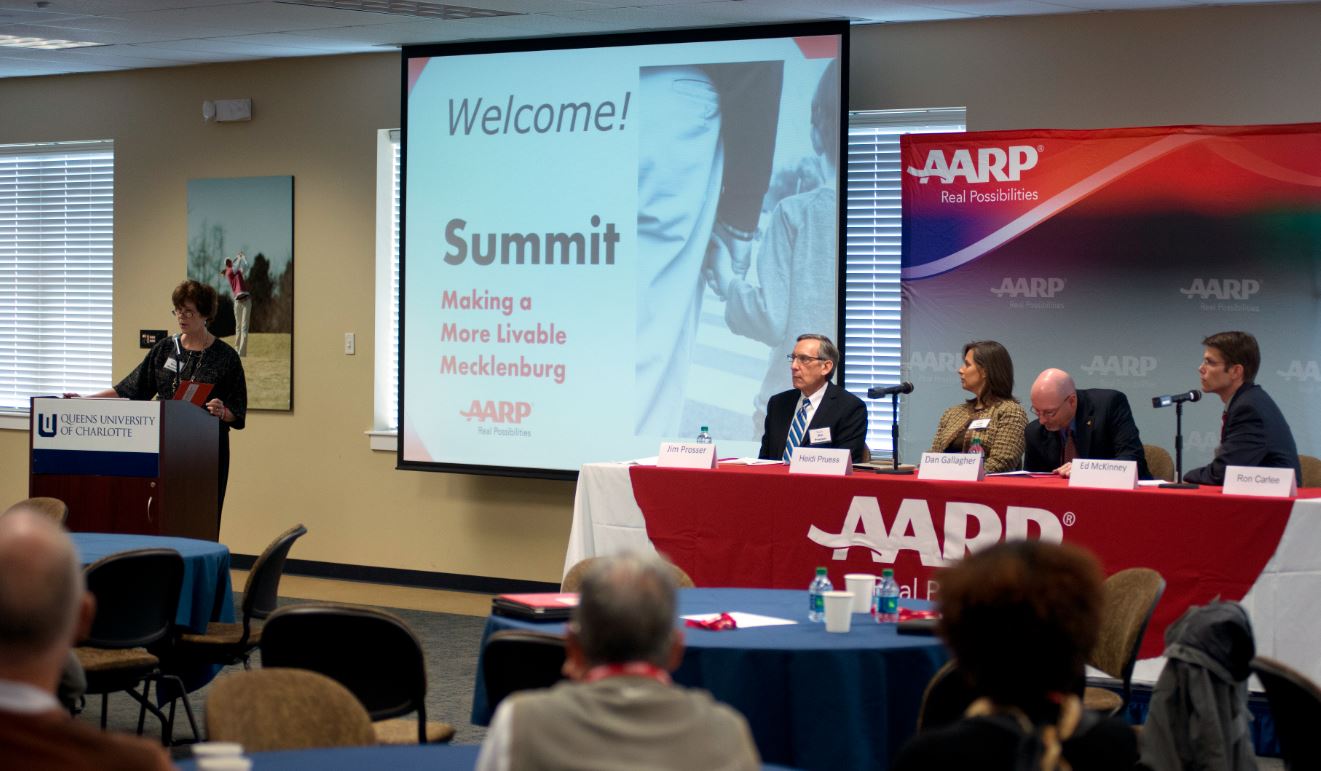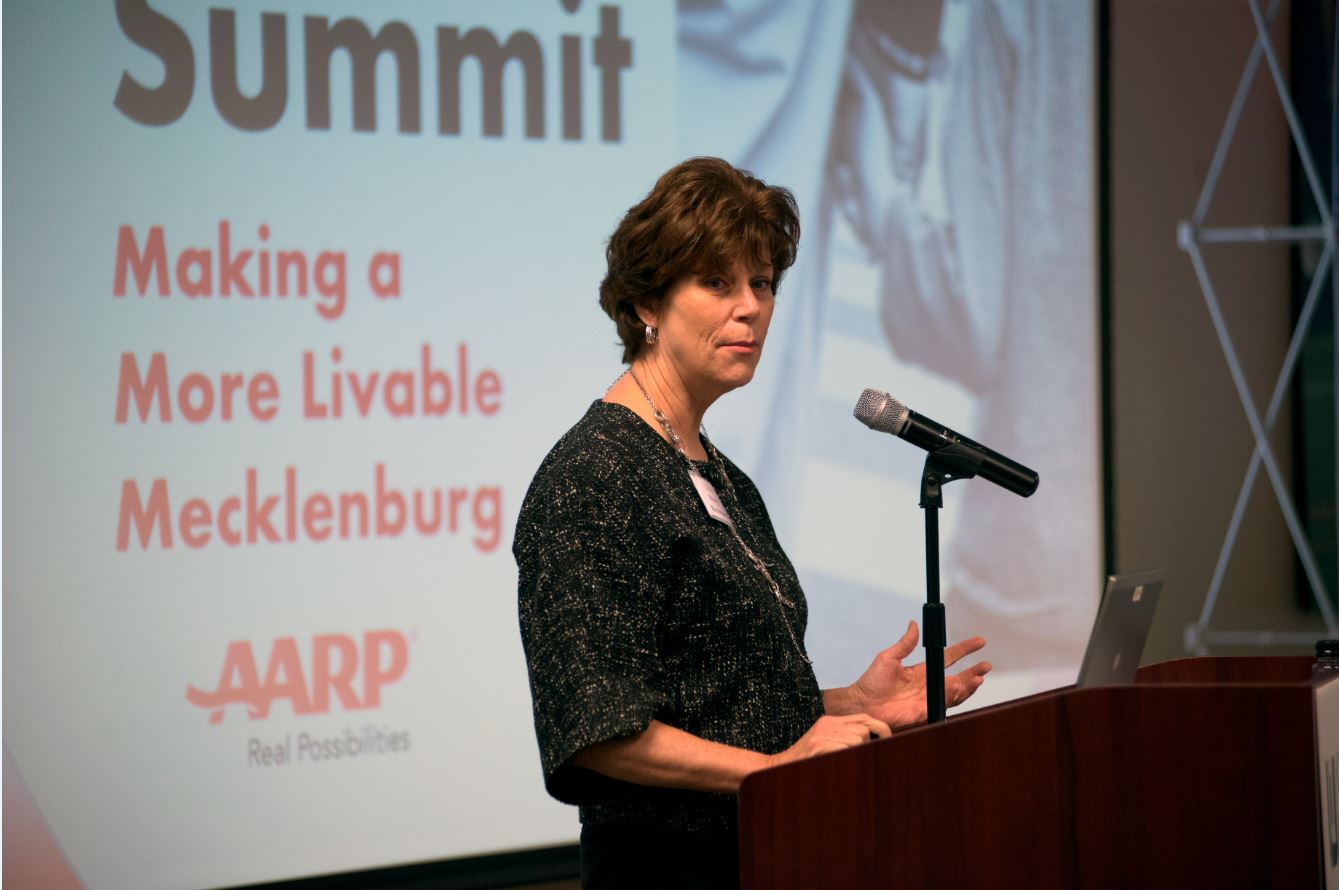AARP Eye Center

On November 21, Charlotte City planners, along with civic and business leaders, met to both recognize current efforts and to identify new ways to make Mecklenburg County more attractive to older adults. AARP North Carolina hosted a summit that helped city planners and community activists learn more about aging trends and research on the 50 plus population to better inform local decisions.
Despite a housing bust and the recession that began in 2008, Charlotte is one of the nation’s top ten cities that managed to record population gains of 30% or more in the decade ending in 2010, according to the Census Bureau. The national average was less than 10% during that time.
AARP North Carolina Director Doug Dickerson said, “Charlotte’s population has exploded to nearly 1.25 million, a 64 percent increase, from 2000 to 2010. Today, older adults comprise nearly ten percent of the county’s population and will remain a growing percentage of the area’s population in the future. Sharing information about AARP’s age-friendly cities is one way Charlotte can remain a great place to grow old.”
Although the banking industry has helped the city thrive, adding to its growth is an influx of older adults. According to CNN Money, “Contributing to the area's growth is the ‘half-back’ phenomenon. North Carolina receives a large number of former Northerners who first retire to Florida, but later decide to leave the state.”
AARP has been helping participating U.S. communities become great places for all ages by adopting such features as safe, walkable streets, better housing and transportation options, access to key services, and opportunities for residents to participate in community activities. Well-designed, livable communities promote health and sustain economic growth.

In October, AARP began its efforts to make Charlotte more walkable as AARP volunteers surveyed pedestrian intersections to make sure they are safe. AARP is sharing the information with the Charlotte Department of Transportation to help them prioritize future projects to better meet the needs of the city’s population.
Charlotte Mayor Patsy Kinsey and City Manager Ron Carlee were among the civic leaders who attended the summit. Mayor Kinsey said, “The City of Charlotte is committed to creating an age-friendly community where our older residents feel at home. Through development along our light rail line and projects like Romare Bearden Park, we are actively working to create walkable, livable neighborhoods across our City. We are thankful to the AARP for partnering with us and we look forward to continuing to work with them to improve the lives of our senior citizens in the years to come.”
The program also featured a panel of experts who are leading key initiatives at the regional, county and local levels. These efforts included the regional CONNECT Our Future initiative, the Mecklenburg Livable Community Plan, and numerous efforts being approached by the Charlotte Departments of Transportation and Planning including the 26-mile Cross Charlotte Trail and expansion of the light rail.
One of the notable components of the summit was the “stakeholder speed dating session”, which featured 11 distinct organizations and agencies working to help make the region more livable. During this hour, attendees were able to spend 15 minutes each in three speed dating rounds to learn about the valuable work being done in the region that is often overlooked.
One speed dater group is Volunteer Transportation Services, a newly emerging volunteer ride share program in the region that will allow residents to get car rides with vetted volunteer drivers so they may do their shopping, get to their doctor visits and other activities. This will allow people unable to drive or without access to transportation to be connected to their community, while utilizing the willingness of their neighbors to share rides. This new program illustrates one of the many new or underreported programs that the region is developing that will need to be common in the future.
According to AARP’s Livable Communities, the keys to livability for older adults are:
Affordable housing options and good home design allow residents to age in place.
Transportation and mobility are the keys to independence and community connection.
Policies that link transportation, housing and other community features create livable communities for all ages.
Programs that foster civic and community engagement contribute to successful aging.
Livable communities improve health, allow residents to age in place, and lower public health costs.

AARP Associate State Director Michael Olender said, “Well-designed, livable communities promote better health and sustain economic growth. And they make for happier, healthier residents – of all ages. AARP’s Livable Communities can provide the information and resources to help Charlotte become a top destination for older adults and for ones who want to age in place.”
To get involved with AARP’s efforts to make the region more livable, contact Michael Olender at molender@aarp.org and follow our efforts on Twitter/AARPCLT























































